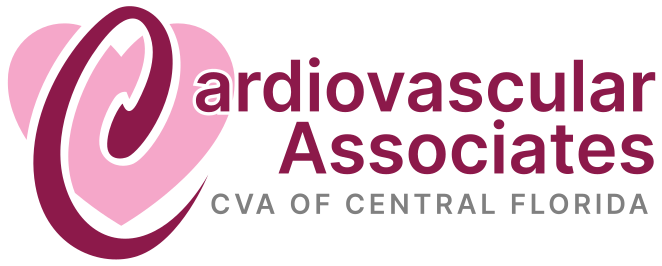Swelling in the Legs and Feet
Causes of Vascular-Related Swelling in the Legs and Feet
Vascular-related swelling in the legs and feet can arise from a variety of conditions that impact the intricate network of blood vessels responsible for transporting blood throughout the body. When the normal blood flow becomes disrupted, fluid accumulation occurs within the tissues, leading to noticeable swelling. Exploring the potential causes of this swelling is essential for a comprehensive understanding of its origins and effective treatment strategies. Some possible causes include:
- Chronic Venous Insufficiency (CVI)
CVI develops when the valves within the leg veins are unable to function correctly. This leads to a condition where blood pools in the veins, resulting in swelling. Often, this swelling is most prominent around the ankles and lower legs, creating discomfort and heaviness. - Deep Vein Thrombosis (DVT)
A blood clot forming within a deep leg vein can obstruct the natural blood flow. Consequently, the affected leg may experience swelling, often accompanied by warmth and pain. If not addressed promptly, DVT can pose serious risks. - Peripheral Arterial Disease (PAD)
PAD occurs when the arteries that supply blood to the legs narrow, limiting blood flow. As a consequence, swelling can arise in the legs and feet due to insufficient blood circulation. - Lymphedema
Blockages or damage to the lymphatic system can impede the drainage of lymph fluid from the limbs. This leads to fluid buildup and noticeable swelling in the affected areas. - Heart Failure
When the heart struggles to pump blood effectively, it can lead to fluid retention in various parts of the body, including the legs and feet. Swelling in this context often accompanies other symptoms like shortness of breath and fatigue. - Venous Insufficiency
This condition disrupts the veins' ability to return blood efficiently to the heart. Consequently, fluid can accumulate in the lower extremities, causing swelling, discomfort, and aching sensations.
Swelling in the Legs and Feet as Symptoms of Vascular Conditions
If you notice swelling or edema in your legs and feet, pay attention - it's often a sign of an underlying vascular condition. Swelling signals a problem with blood flow or circulation in the lower limbs. Vascular diseases like chronic venous insufficiency, deep vein thrombosis, peripheral artery disease, or lymphedema can cause fluid buildup and swelling in the legs and feet. Each condition disrupts circulation in different ways.
Don't ignore or downplay this symptom. Swelling means there's an imbalance in your vascular system needing prompt medical care. Without treatment, it can worsen, leading to complications like leg ulcers, blood clots, or permanent damage.
See a vascular specialist right away if the swelling persists or worsens. They will determine the exact cause and provide targeted treatment to address the swelling and underlying vascular problem. Getting the correct diagnosis and care quickly can help restore proper circulation, relieve discomfort, and prevent serious consequences.
Treatment Options for Vascular-Related Swelling in the Legs and Feet
When managing vascular-related swelling in the legs and feet, various effective treatment options are available. If you are experiencing swelling in your legs or feet, seeing a doctor to determine the cause and get appropriate treatment is essential. Early diagnosis and treatment can help to prevent serious complications. Here are some common treatment methods:
- Compression Therapy
Compression therapy involves wearing specialized stockings or bandages that gently apply pressure to the legs. This aids in enhancing blood circulation, reducing fluid buildup, and alleviating swelling. - Medications
Several medications can help to reduce swelling, including diuretics, which help to remove excess fluid from the body, and compression stockings, which help to improve circulation. - Surgical Interventions
In some cases, surgery may be necessary to treat vascular-related swelling. For example, if you have varicose veins, surgery may be used to remove them. - Lifestyle Adjustments
At-home strategies complement medical treatments:- Raising your legs above heart level periodically facilitates fluid drainage.
- Avoid prolonged periods of sitting or standing. Regularly shift positions, stretch, and take short walks to promote circulation.
- Maintaining a healthy weight helps ease pressure on veins and arteries, minimizing the likelihood of swelling.
- Prioritize a diet rich in whole foods, including fruits, vegetables, and whole grains. These choices bolster nutrient intake, which is crucial for optimal circulation.
- Engaging in regular exercise enhances blood flow and reduces swelling.
- Quitting smoking is pivotal, as smoking damages blood vessels and increases the risk of vascular issues.
When To See a Vascular Specialist for Swelling in the Legs and Feet
If you notice swelling in your legs or feet, seeking medical attention is crucial to identifying the underlying cause and initiating timely treatment. Early intervention in addressing vascular conditions can help prevent potential complications, including infections, ulcers, and even the risk of limb amputation. Here are some indications that it's time to consult a vascular specialist regarding swelling in your legs and feet:
- Severe or persistent swelling
If the swelling is substantial or doesn't improve over time, it's important to have it evaluated by a vascular specialist. - Accompanying symptoms
Swelling accompanied by symptoms such as pain, redness, or warmth may indicate an underlying vascular issue that requires attention. - Vascular disease history
If you have a history of vascular disease or possess risk factors associated with vascular conditions, it's advisable to consult a specialist for a comprehensive assessment. - Pregnancy
Pregnant individuals experiencing swelling in the legs and feet should seek medical evaluation to rule out any vascular-related concerns. - Changes in skin appearance
If the skin over the swollen area exhibits changes like discoloration or ulceration, it's essential to consult a vascular specialist promptly. - Limited mobility
Swelling causing discomfort or hindering your ability to move should prompt you to seek medical advice. - Systemic conditions
Individuals with diabetes or heart disease should consult a vascular specialist to ensure comprehensive care.
Photo Gallery
Video Gallery
Testimonials
Photo Gallery
Meet Your Cardiovascular Specialists
In Search of Care? Request a Consultation Today


 Fax: 407-846-2524
Fax: 407-846-2524
